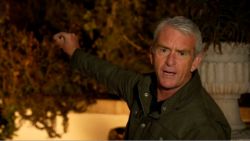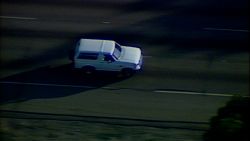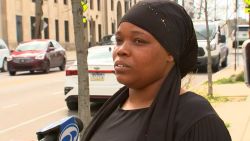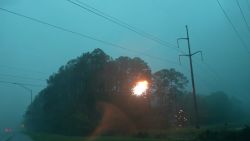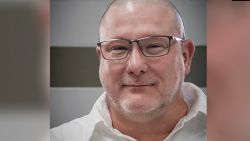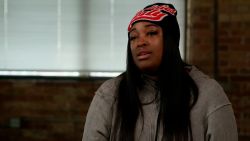At the end of a recent meeting, middle school teacher Cassie Lopez and her colleagues were handed a large bucket, kitty litter and a pop-up shower curtain.
They were told that the items could be used as a makeshift bathroom in the event their school was placed on an extended lockdown.
“This isn’t normal,” Lopez said in a video shared on social media. But she wasn’t criticizing her Colorado school district. She was commenting on the state of things in America’s classrooms.
Prepping for back to school used to mean new backpacks for the students and new lesson plans for teachers. But today, as the nation wrestles with the pervasive issue of mass shootings, going back to school means something completely different.
As schools around the country reopen, many students will go through active shooter drills and practice school lockdowns. The necessity of such preparation is even more pronounced this school year after a deadly summer of mass shootings occurred in Gilroy, California; El Paso, Texas; and Dayton, Ohio.
“School shootings are becoming normalized. It’s becoming a reality,” said Lopez, a Spanish teacher for Jeffco Public Schools, home to Columbine High School, where 12 students and a teacher were killed in a school shooting 20 years ago.
As the US school year begins, teachers like Lopez will be tasked with explaining the purpose of active shooter drills to students as young as preschool age. And parents – who want nothing more than for their children to come home safe – will be having tough conversations about what to do if a shooter comes to school.
‘Where’s the safe space?’ parent wonders
Lissette Rozenblat, a mother in Parkland, Florida, recently attended a back-to-school event at Marjory Stoneman Douglas High School. As she sat in her daughter’s classroom, she couldn’t help but glance around to assess the safety of the room.
“I’m looking around like, where’s the safe space in this classroom? There’s not even a closet to hide in,” she said.
This is Rozenblat’s new reality, because she knows exactly what it’s like to learn her child survived a school shooting. Her daughter was a sophomore at Marjory Stoneman Douglas High School in Parkland, Florida, when a gunman stormed the school on February 14, 2018, killing 17 people.
The school board has since invested more than $30 million toward enhancing school safety and security, and earlier this year the district hired a chief of safety, security and emergency preparedness.
The Rozenblats gave their daughter the option to leave the school, but she chose to stay with her friends. She is now going into her senior year. Every day, Rozenblat said, is a “constant reminder” of the shooting.
Just a few days into the school year, her daughter went through two evacuation drills, Rozenblat said, making her nervous and uptight.
“Those kids will never be the same,” the mother told CNN. “It’s part of our reality now. We have a completely different child now.”
Rozenblat’s seventh-grade son, who attends school next door to Marjory Stoneman Douglas, was also impacted by the shooting.
He recently said he’s worried about walking through the hallways alone, because “he’s afraid someone will jump out with a gun,” Rozenblat said.
“He’s scared to go to school, and he did not go through any of this,” his mother said. “But that’s what he hears in the community.”
Since the Parkland shooting, Rozenblat has taught her son not only to “stay vigilant, always look for exits and be aware of his surroundings,” but also to “be kind to everybody,” in hopes it will protect him from a potential shooter.
Even preschoolers have lockdown drills
Parents aren’t alone in thinking through possible school shootings. And the potential for a shooting is apparent for any group of students, whether they’re in middle school or as young as 4, said Katie Norton, a pre-K teacher with the District of Columbia Public Schools.
She pointed to the 2012 school shooting in Newtown, Connecticut, where 26 people were killed. Some of them were kindergartners.
“If kindergartners can die in a school shooting,” Norton said, “that means school shooters don’t discriminate.”
One of her struggles is preparing students that young for a lockdown drill. In years past, Norton told the children they were competing to see which classroom could be quietest, and that the school’s principal would announce which class was best at hiding. She didn’t explain the context of hiding from a shooter.
But given the frequency that shootings occur, Norton said she wonders whether teachers should be more candid with young students about the drills to ensure their safety.
“If I only tell 3- and 4-year-olds that we’re playing hide-and-seek, if (a shooting) really occurred, could I ensure they would stay where they’re supposed to be?” she said. “Could I ensure they would take it seriously?”
“Most of us feel that telling kids untruths and not being transparent does more harm than good,” she added. “I think that’s where we are now, because it’s happening too frequently.”
Norton said she has also thought about how she’d keep 3- and 4-year-olds quiet and calm during a real shooting, rattling off ideas as though they’re obvious additions to her curriculum.
During a drill or a real lockdown, the class would hide in a walk-in cubby space, Norton said. She realized she needed to keep small toys to comfort the children there, as opposed to elsewhere in the classroom, to keep them quietly occupied as a potential threat roamed the halls.
As a focusing strategy, Norton said she frequently uses fingerplays such as “Head, Shoulders, Knees and Toes” with her students.
But now, Norton said she will block off extra time in her transition between classes to practice the fingerplays with students in complete silence. Her hope, she said, is that she could use the silent fingerplays to keep her students calm and focused in a real shooting.
“I think about it a lot,” she said.
Fears extend beyond the classroom
This summer’s mass shootings at an El Paso Walmart and a California food festival have sparked fears that children aren’t safe anywhere.
Brian Tuffin in Weston, Florida, has talked to his children about fleeing gunfire and making themselves a harder target.
Tuffin said he’s had serious conversations with his three children – a senior and freshman in high school and a seventh grader – to give them strategies to use in a mass shooting.
“Look,” he told them. “Your job is to stay alive.”
“The concept of having to say that to your kids,” he added – “it’s just disheartening.”
Rather than giving his children just one strategy, Tuffin’s given them at least two — one to use if they hear gunfire in an open place, and one to use if they’re in their classroom.
In the first scenario, if his children hear gunfire and see people running, Tuffin said, they’re told to stop, listen and decide which direction the shots were coming from. Then, run the opposite direction, zigzagging as they go, to make themselves harder targets for the shooter.
The other scenario he imagined was in a school shooting, while they’re in class.
In that case, they simply need to follow instructions. But he’s worried about what could happen if a shooting occurs while they are moving between buildings or between classes.
The children were “consciously engaged” during the conversation, Tuffin said. He could see it in their eyes.
“But on the flip side, it’s like, I can’t believe I have to have this conversation.”
Other parents such as Erica Rowlands have weighed buying their children bulletproof backpacks, the sales of which have skyrocketed in recent weeks, according to the backpack manufacturers.
Rowlands, whose daughters attend high school in a Chicago suburb, told CNN that if her children wanted bulletproof backpacks, she wouldn’t hesitate to buy them.
“I absolutely would buy one,” she said. “It’s just another barrier (between them and the shooter), and if it’s available I’d purchase it.”
“With all the other shootings taking place, we feel they’re not just vulnerable in school,” she added, “but in many places where they hang out.”
It’s not about the bucket
After Lopez and her fellow teachers were given the makeshift lockdown bathroom kits, she posted a short video on her Instagram about how shocking the session had been for her. It was shared by a friend on Twitter and then picked up by local news outlets.
An official for the school district told CNN the buckets were not new. They have been given to teachers for about seven years. It was just startling to Lopez, who’s in her first year with the district.
During that same professional development session the teachers also were given a Sharpie marker.
At first glance, it’s a fairly benign tool any teacher would have on hand. But this Sharpie was to be used after she applied a tourniquet to a bleeding student, to mark the time for paramedics who would later arrive on scene.
Her first thought was, “What if I had to do that?”
“I don’t know how to apply a tourniquet or pack wounds,” she told CNN. “And the thought of my students having to go to the bathroom in a bucket is really horrible.”
What bothers her, she told CNN, is what the bucket and the other tools represent – what they say about the state of the United States and the lack of laws that adequately address gun violence.
“We’re left to do what we can to deal with the possibility of a school shooting, and a school can only do so much,” she said. “What can we do? Well, we can have a bucket so that if the kids need to pee during a lockdown, they can pee. We can train teachers to apply tourniquets and pack wounds.”
“The fact that it is a necessity just says it all,” she said.
CNN’s Bill Kirkos, Christina Zdanowicz, Natalie Johnson and Konstantin Toropin contributed to this report.




